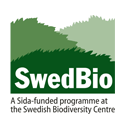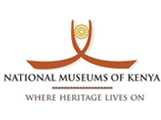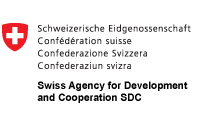Species in the Genus
Species in Kenya, Tanzania & Uganda
Description
Possible Causes of Confusion
Distribution in Kenya, Tanzania & Uganda
Habitats
Nesting
Crops Visited
Other Plants Visited
Economic / Ecological Importance
Threats
Conservation and Management Practices
Legislation (National and International)
References
Click on images to enlarge
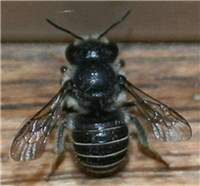
Female Afranthidium repetitum, Australia. Photo by Arthur Chapman (CC BY-NC-SA)

Female Afranthidium repetitum visiting a Bidens head. © Bernhard Jacobi
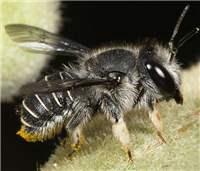
Female Afranthidium bee basking on a Grevillea pod. © Bernhard Jacobi
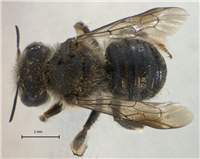
Afranthidium concolor (female) - pinned specimen. Photo: Connal Eardley
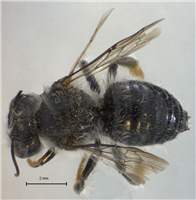
Afranthidium concolor (male) - pinned specimen. Photo: Connal Eardley
Summary
Honey bees are not the only bee species that are significant for human wellbeing. Afranthidium bees are a group of native bee species that do not produce honey but are likely to be important pollinators of crops and wild plants. Females have a sting, but they are not aggressive and will only sting if handled. Afranthidium nest in natural cavities and live independently of others (i.e. they are solitary). They are between 7mm and 13mm in length and have long tongues. This fact sheet provides information about these bees to encourage farmers to understand and protect them to help ensure that their crops are effectively pollinated.
From a conservation and agricultural standpoint it is not necessary to recognise all the different bee genera. However, it is important to know that there is a large bee biodiversity. Different bee genera pollinate different plant species, although there is some overlap that acts as a buffer as bee populations wax and wane. For healthy ecosystems, including agro-ecosystems both diversity and abundance in the bee fauna is important.
Scientific Classification
Kingdom: Animalia
Phylum: Arthropoda
Class: Insecta
Order: Hymenoptera
Family: Megachilidae
Subfamily: Megachilinae
Tribe: Anthidiini
Genus: Anthidiini Michener, 1948
Species in the Genus
The genus Afranthidium is a group of solitary bees with about 60 known species from southern Europe and
Species in Kenya, Tanzania & Uganda
Eardley and Urban (2010) list two species of Afranthidium bees from
Description
Afranthidium bees are not well known by local people (including farmers) in
Possible Causes of Confusion
Some insect species can be mistaken for Afranthidium bees. These include other bee species in the tribe Anthidiini (which include Afranthidium and Pachyanthidium bees ). They can be distinguished by microscopic characteristics that are described in the key that accompany these fact sheets. Afranthidium bees can also be confused with some flies and wasps. Flies are different in that they have large eyes and two wings while bees have smaller eyes and four wings. In addition, most flies that may be confused with these bees do not collect pollen from flowers. Wasps have a constriction (“waist�?) at the junction of their abdomen and thorax which is absent in bees.
Distribution in Kenya, Tanzania & Uganda
Afranthidium bees have been recorded in
Habitats
Afranthidium bees are likely to be present in various habitats (land-uses) in East Africa such as grasslands, natural forests, marshlands, protected areas, farmlands, rangelands, woodlands, woodlots (forest plantations), along river edges (riparian areas) and in coastal areas.
Nesting
Afranthidium bees live independently of others (i.e. they are solitary). They build their nests in sheltered locations in pre-existing natural cavities such as burrows, crevices and hollow twigs that can be found in less disturbed and dry habitats.
Crops Visited
Afranthidium bees visit a variety of flowering crop species belonging to different plant families in
Other Plants Visited
Afranthidium can forage on a range of wild plant species (trees, shrubs, herbs, weeds, lianas) found in different habitats. These bees preferentially visit plant species with small purple and blue, milk cream flowers.
Economic / Ecological Importance
Little information exists on the usefulness of these bees to the lives of the people in
Threats
In
Conservation and Management Practices
There are now concerted research efforts in the region to develop best practices for conservation and management of bees to enhance crop production. Theoretically, bee conservation and management is inexpensive and adopted activities can also improve the aesthetic value of the landscape. Such practices involve setting land aside (e.g. a 1-metre strip) in the farmland to host all year round food resources for the bees, as well as safer sites for nesting, mating, resting and refuge from natural enemies. During flowering, farmers should manage pesticide usage carefully to avoid poisoning flower-visiting bees. Farmers should also minimise pesticide drift from the field to adjacent areas. Laws governing registration and use of plant protection products also indirectly play a major role in the protection of pollinators. Trampling by people and livestock and tilling should be managed to conserve the nesting sites of those species that nest in burrows. KARI (the Kenya Agricultural Research Institute) is developing protocols for mass rearing of different species of solitary bees. Any successful results from this research will be freely communicated to the public. In addition, KARI is collaborating with other stakeholders to ensure in situ conservation and management of bees for pollination purposes.
Legislation (National and International)
There is not yet any legislation in
References
1. Eardley CD, Gikungu MW and Schwarz MP (2009) Bee conservation in Sub-Saharan Africa and
2. Eardley CD, Kuhlmann M and Pauly A. (2010) The Bee Genera and Subgenera of sub-Saharan
3. Eardley CD and Urban R (2010) Catalogue of Afrotropical bees (Hymenoptera: Apoidea: Apiformes). Zootaxa, 2455: 1–548.
4. Michener CD (2007) The Bees of the world, the John Hopkins University Press,
5. Munyuli T (in press) Pollinator biodiversity in





